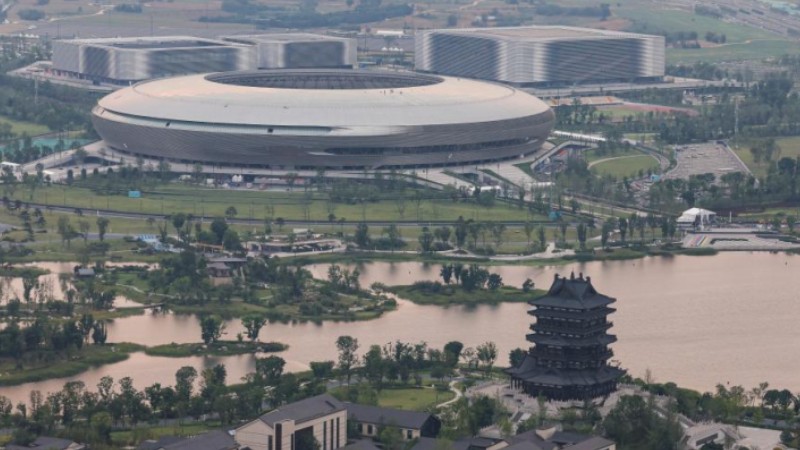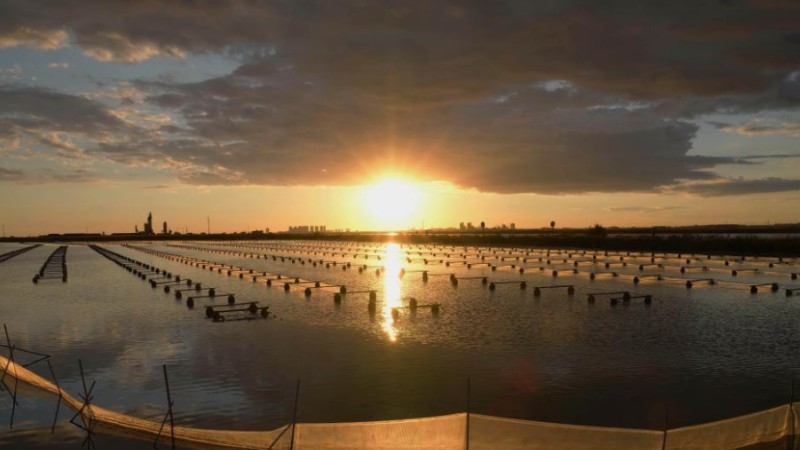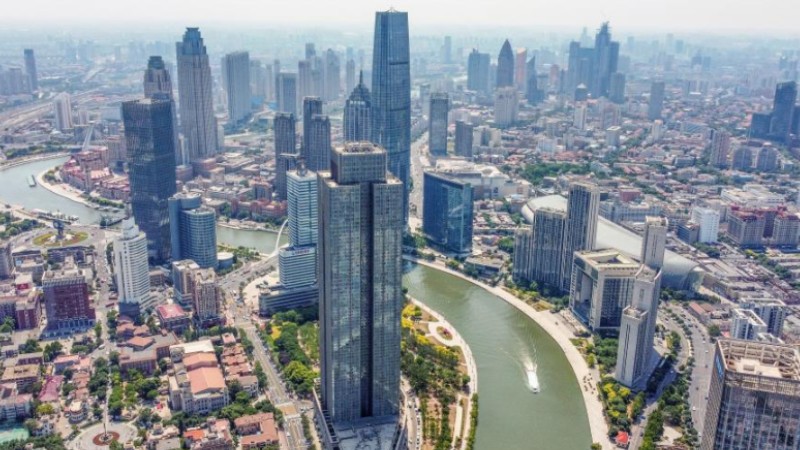Royal relics cast modern charm in southwest China
CHONGQING, June 28 (Xinhua) -- Against the backdrop of the confluence of the Yangtze and Jialing rivers in southwest China's Chongqing Municipality, the imposing silhouette of traditional Chinese-style buildings tells a tale of a time gone by.
The buildings, nestled between mountains and rivers, house the Southward Relocation of Forbidden City's Artifacts Memorial. With its name echoing China's former imperial palace in Beijing, the memorial is a monument to a wartime endeavor that saw the relocation of imperial treasures.
During the recent Dragon Boat Festival, the memorial attracted nationwide visitors. Zhou Yueming, a Beijing tourist, was delighted by the memorial's offering of intangible cultural heritage activities, including hand-weaving sweet wormwood and making dragon boat sachets.
"It is meaningful and fun to experience these activities in a place with such historical depth," Zhou said.
Many visitors, including Zhou, are perplexed by the memorial's name, especially as Chongqing lies some 1800 km from the former palace in the Chinese capital. The history behind its moniker of "Forbidden City," or widely known as Palace Museum today, traces back to the wartime story of moving artifacts in the royal palace southwards.
Over 80 years ago, amid the war of resistance against Japanese aggression, 9,338 crates of cultural relics were transported across mountains and rivers to Chongqing. Once in the city, these treasures found refuge in various foreign firms, such as Anderson & Co. Ltd., where 3,694 crates were stored.
Anderson & Co. Ltd. was established in 1891 by Swedish businessman Anderson, mainly dealing in local specialties and foreign goods.
"Assets of Swedish businessmen and citizens were less susceptible to wartime destruction as Sweden stood neutral during World War II," said Yu Yun, head of the cultural management office of Chongqing's Nan'an District.
To ensure the relics' safety, Anderson vacated the warehouse while each crate was meticulously inspected, recorded, and stored. In the event of air raids, the Swedish flag would be laid on the roof to secure their safety.
Today, the original Anderson & Co. Ltd. area houses eight standalone buildings, combining historical architecture and traditional stylistic features. The local government has revitalized the area, retaining original structures while giving it a modern facelift.
The history and culture that define these structures are blended with the modern creative industry, as booming businesses attract visitors in pursuit of a taste of the past.
In a cafe nestled within this historical architectural cluster, many young visitors savor "Corner Tower Coffee," a cup of coffee adorned with motifs of the Palace Museum. A fusion of old and new elements creates a dialogue between the past and the present.
"The memorial gives people an opportunity to learn about the southern relocation of national treasures," said Li Yuan, a tourist. "Savoring coffee with elements of the palace museum in a historical setting just makes the experience all the more captivating."
The memorial officially opened on June 11, 2021. Today, it includes a classroom, a bookshop, and a post office, all themed on the relics' relocation history. It also hosts a variety of activities, such as research classes, art education courses, and intangible heritage experience sessions.
"Chongqing was a significant node in the relocation of the Palace Museum artifacts, and now this history is entering people's everyday lives," said Shan Jixiang, former curator of the Palace Museum.
Photos
Related Stories
- West China's mountainous megacity pursues harmonious integration of tradition, modernity
- Pic story: French artist does lacquer art research and creation in Chongqing, SW China
- Changshou Lake takes on new look thanks to efforts of ecological restoration
- Parkour picks up steam in SW China's Chongqing
- Projects worth over 290 bln yuan signed at western China int'l fair
Copyright © 2023 People's Daily Online. All Rights Reserved.









